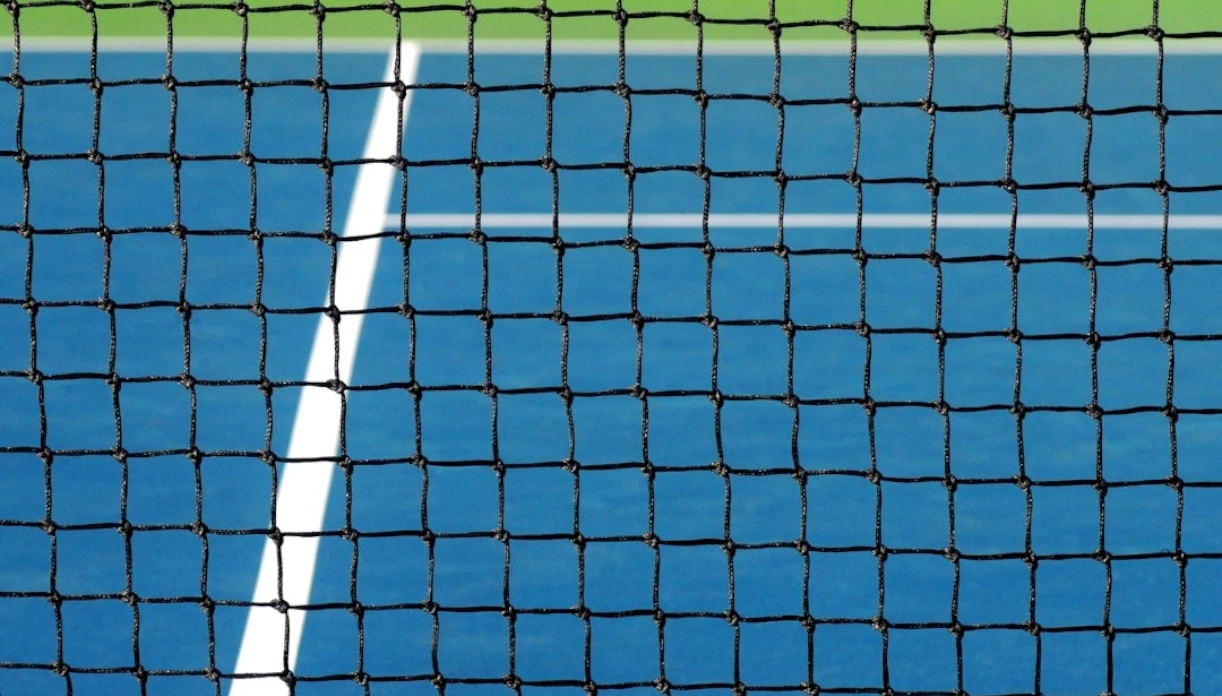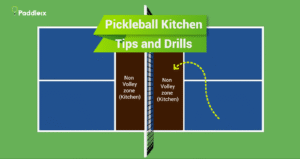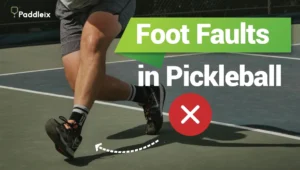Let’s talk about one of the most crucial (and let’s be honest, kind of mysterious) areas on the pickleball court—the kitchen. Nope, not the kind where you burn your toast.
This is the non-volley zone, and mastering it is what separates the pros from the wannabes. You want to win more games? You’ve gotta learn to cook up some real magic in the kitchen!
So, grab your paddle, and let’s dive into the art of dominating the kitchen and winning more points—without burning anything!
The Pickleball Kitchen: Where Games Are Won or Lost
You’ve probably heard someone on the court say, “Games are won in the kitchen!” And let me tell you—they’re absolutely right. The kitchen is where pickleball gets real. Forget about those fancy baseline smashes; the kitchen is where finesse, patience, and strategy take over.
Think of it like this: If the rest of the court is where you grill your steaks, the kitchen is where you bake the soufflé. It’s delicate, precise, and if you mess it up—well, it’s gonna fall flat.
Pickleball Joke: Why did the pickleball player refuse to leave the kitchen? Because they couldn’t resist serving up some serious heat!
The Kitchen Rules: Quick Refresher
Before we get into the juicy stuff, let’s quickly go over the kitchen rules. You know, the things that keep the game fair and stop people from just standing at the net and smashing everything like they’re playing Whac-A-Mole.
- No Volleying in the Kitchen: You can’t hit the ball out of the air (aka a volley) if you’re standing inside the kitchen or on the kitchen line. It’s a fault. Simple as that.
- Momentum Matters: Even if you hit the ball outside the kitchen, if your momentum carries you in after the volley, it’s still a fault. Trust me, I’ve stumbled into the kitchen more times than I’d like to admit. Not my proudest moments.
- Groundstrokes Are Totally Fine: You can step into the kitchen and hit the ball if it’s bounced first. In fact, stepping in to return a dink is how you win in the kitchen. Just remember to get out quickly—think of it as a hot potato
Fun Fact: The kitchen is called that because no one wants to get caught in it. Just like in shuffleboard, where the “kitchen” is where you lose points, you don’t want to get stuck in this kitchen unless you know what you’re doing!
Footwork and Positioning: How to Own the Kitchen Line

Let’s be real—if you don’t have good footwork near the kitchen, you’re toast. The kitchen line is where you’ll spend a ton of time during rallies, so learning to move in and out of this space is key.
The Art of “Toeing the Line”
Here’s a little secret: I learned this tip from a pickleball pro—toeing the line. Keep your feet just inches behind the kitchen line so you can reach in for dinks, but never risk stepping over the line during a volley.
Sounds easy, right? Ha! Let’s just say it takes some practice, but once you master it, you’ll feel invincible.
- Pro Tip: Keep your weight on the balls of your feet, so you’re ready to spring into action. Think of yourself as a cat about to pounce on an unsuspecting pickleball.
Footwork Drill:
Set up cones 7 feet from the net (aka your fake kitchen line) and practice stepping in and out quickly after each shot. It’s all about learning how to hover right at the line without actually stepping into it.
It’s like dancing, but way more intense (and less embarrassing if someone’s watching).
If you want to go even deeper, check out these footwork tips for indoor pickleball that really helped me improve my movement on tighter courts.
Pickleball Joke: Why don’t pickleball players ever get lost? Because they always know their way around the kitchen!
Mastering the Dink: Your Secret Weapon
Ah, the dink—the most underappreciated shot in pickleball. Some players think it’s all about power, but in the kitchen, soft hands win the day.
The dink is your way of controlling the rally and making your opponent work for every shot. And if you do it right, they’ll be the ones scrambling, not you!
How to Dink Like a Pro
A good dink is all about soft control. You want the ball to barely clear the net and land in your opponent’s kitchen, where they’ll have to hit up to return it. That’s when you know you’ve got ‘em.
- Pro Tip: Aim for your opponent’s weaker side—usually their backhand—and keep the ball low. Low balls are hard to attack, and that’s exactly what you want.
Dink Drill:
Grab a buddy and practice dinking back and forth. Alternate between soft dinks and slightly faster push dinks to keep your opponent guessing. And remember: It’s all about control, not speed.
If you’re ready to really fine-tune your skills, check out these pickleball dinking drills that have seriously improved my control and confidence at the kitchen line.
Pickleball Joke: Why did the pickleball refuse to leave the kitchen? Because it had a serious bounce to it!
Offensive Kitchen Play: When to Turn Up the Heat

You’ve been dinking back and forth, and suddenly—your opponent messes up! Their dink is a little too high. Now’s your chance to turn defense into offense. But when exactly should you attack? That’s the golden question.
Recognizing Attack Opportunities
Look for a high dink or a ball that’s just a little too slow. That’s your cue to go on the attack with a punch volley. The goal? Aim for their feet or their body. Make it uncomfortable for them to return the shot. Trust me, no one enjoys having to return a ball aimed straight at their torso!
Punch Volleys & Body Shots
When you get the chance, hit a punch volley—basically a fast, controlled shot. Aim low and go for the body. It’s like the pickleball version of dodgeball, but, y’know, legal.
Fun Fact: Did you know that 80% of pickleball rallies are won at the kitchen line? Yep, that’s why you should spend more time practicing there!
Defensive Kitchen Play: Stay Cool Under Pressure
Okay, so what if you’re the one under pressure? No problem! The key to solid defense in the kitchen is staying calm and resetting the point. It’s not about winning immediately—it’s about staying in the game long enough to force a mistake.
Resetting the Point
Use a soft dink to reset the rally and take away your opponent’s momentum. It’s like telling them, “Not so fast!” They’ll have to slow down and play your game.
Advanced Techniques: The Erne, ATP, and More
Ready for some high-level kitchen magic? Let’s talk about two of the coolest shots in pickleball: the Erne and the Around the Post (ATP). These are the moves that make crowds go wild.
The Erne Shot
The Erne is when you jump or run around the kitchen to hit a volley legally. Yep, you’re basically flying across the court, making a crazy shot that leaves your opponent’s jaw on the floor.
The ATP (Around the Post) Shot
An ATP shot is when you hit the ball around the net post and into your opponent’s court. This shot works when the ball is hit super wide—wide enough for you to sneak it around the post instead of over the net.
Pickleball Joke: Why did the pickleball player get promoted? Because they were always on point with their ATP shots!
Mental Game: Patience and Anticipation in the Kitchen
The kitchen isn’t just about physical skills—it’s also a mental game. You need the patience of a saint and the anticipation of a cat about to pounce. Waiting for the perfect moment to attack takes practice, but once you nail it, you’ll feel like a pickleball ninja.
Mental Tip:
Stay cool, stay consistent. The longer the rally goes, the more likely your opponent will mess up. Just be ready to capitalize when they do.
Game-Changing Drills for Kitchen Mastery
Ready to level up your kitchen game? Here are some must-try drills to help you dominate:
- Dink Progression Drill: Practice starting with soft dinks and then build up to faster, more aggressive shots. This will help you learn when to switch from defense to offense.
- “Toeing the Line” Footwork Drill: Focus on moving quickly in and out of the kitchen line without stepping over. This drill will boost your footwork and help you avoid costly foot faults.
- Volley Control Drill: Grab a partner and volley back and forth just behind the kitchen line. It’s all about control and balance—keeping the ball low and fast.
The Kitchen is Your Battlefield—Control It, Win It
At the end of the day, the kitchen is where points are won. If you can master the finesse, the footwork, and the mental toughness needed to control the non-volley zone, you’ll be well on your way to victory.
Remember: practice makes perfect, so hit the court with these tips and drills in mind. The more you dominate the kitchen, the more you’ll dominate the game. So, what are you waiting for? Get out there and start cooking up some wins!
Pickleball Joke: What’s a pickleball player’s favorite type of kitchen? The one where they get to serve it up hot!
FAQs: Mastering the Pickleball Kitchen
What is the kitchen in pickleball?
The kitchen, or non-volley zone, is the 7-foot area by the net. You can’t volley (hit the ball in the air) while standing in or touching the kitchen line.
Can I step into the kitchen?
Yes, but only after the ball bounces. You can’t volley while in the kitchen, so step out quickly after hitting a groundstroke.
What’s a foot fault in the kitchen?
A foot fault happens when any part of your foot touches the kitchen line during a volley. Stay just behind the line to avoid it.
Why is the dink so important in the kitchen?
The dink is a soft, controlled shot that keeps your opponent from attacking. Mastering it helps you control rallies and win points.
Where should I stand near the kitchen?
Stay just behind the kitchen line, ready to step in for dinks or back up for deeper shots. Be light on your feet!
What is an Erne shot?
An Erne is an advanced shot where you jump around the kitchen to volley. It’s a sneaky move that can catch your opponent off-guard.
How can I avoid momentum faults?
Stay balanced and avoid over-extending when volleying near the kitchen line. Controlled movement is key!
Can I volley over the kitchen?
Yes, as long as your feet aren’t in or touching the kitchen line. Your paddle can be over the kitchen, just not your body.
What’s an ATP shot?
An ATP (Around the Post) shot is when you hit the ball around the net post and into your opponent’s court—legal and super impressive!
How do I improve my kitchen play?
Practice dinking, footwork, and volleys near the kitchen line. Drills focused on control and quick movement will help a lot!



